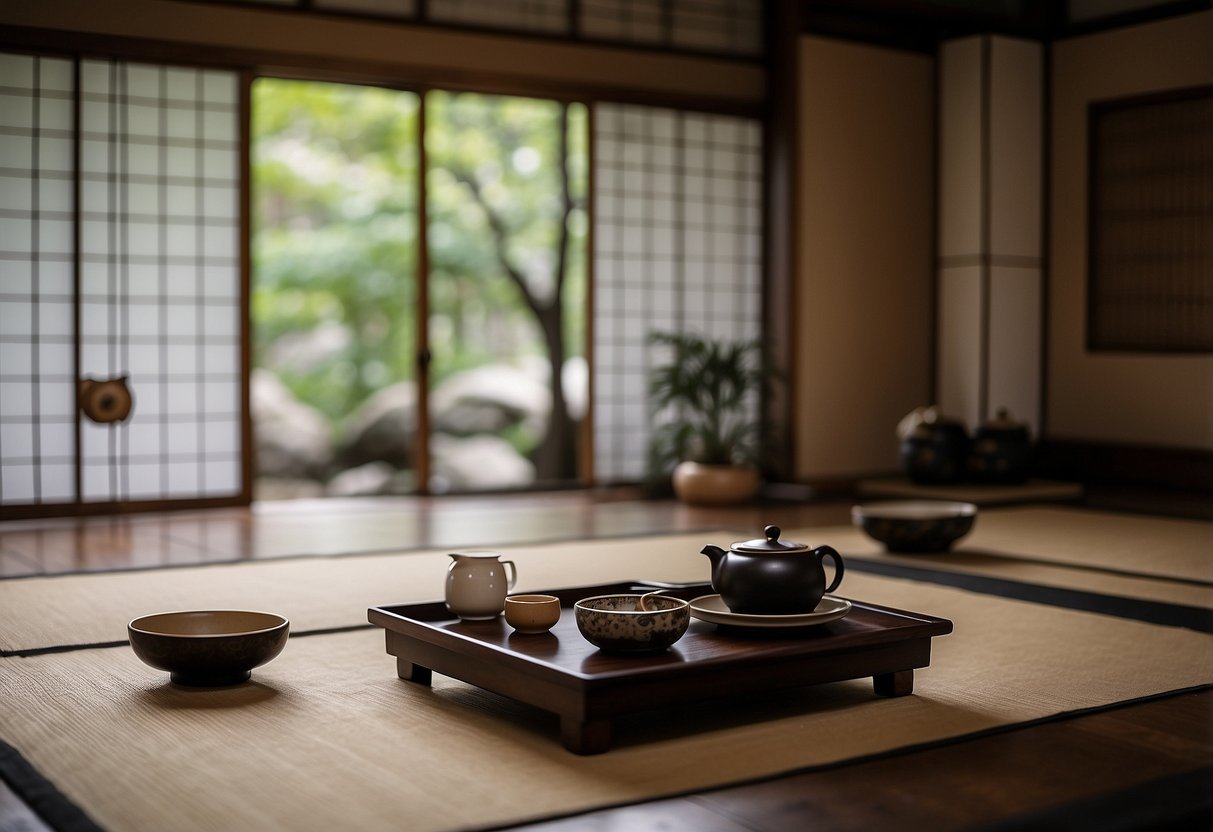Tatemae and Honne are two key concepts in Japanese social interaction. These ideas shape how people communicate and behave in different settings. Tatemae refers to the public face or behavior one shows, while Honne represents a person’s true feelings or desires.

In Japan, people often use tatemae to maintain harmony and avoid conflict. This might mean agreeing with others in public even if you disagree privately. Honne, on the other hand, is only shared with close friends and family. It’s the real thoughts and opinions a person holds.
Understanding tatemae and honne is crucial for anyone interacting with Japanese culture. These concepts affect business dealings, social events, and everyday conversations. They help explain why Japanese people might seem reserved or indirect to outsiders.
Table of Contents
Key Takeaways
- Tatemae is the public face shown in Japan, while honne represents true feelings.
- These concepts help maintain social harmony in Japanese culture.
- Knowing about tatemae and honne aids in understanding Japanese communication styles.
Cultural Foundations of Tatemae and Honne

Tatemae and honne are deeply rooted in Japanese culture. These concepts shape social interactions and reflect core values of harmony and group cohesion.
Definitions and Origins
Honne refers to a person’s true feelings, while tatemae is the public face shown to others. These ideas emerged in post-war Japan as society became more complex.
Honne represents inner thoughts and desires. It’s the private self rarely revealed in public.
Tatemae is the outward behavior that follows social norms. It helps maintain smooth relationships.
The interplay between honne and tatemae allows Japanese people to navigate social situations. It helps them avoid conflict and preserve group harmony.
Wa: Harmony in Japanese Society
Wa is the Japanese concept of harmony. It’s key to understanding tatemae and honne.
Wa values group cohesion over individual expression. It encourages people to put aside personal desires for the greater good.
Tatemae supports wa by promoting polite, non-confrontational behavior. It helps create a peaceful social environment.
Honne exists alongside wa. It allows for personal feelings while outwardly maintaining harmony.
Uchi and Soto: Inside and Outside
Uchi (inside) and soto (outside) are important concepts in Japanese society. They relate closely to tatemae and honne.
Uchi refers to one’s inner circle – family, close friends, and colleagues. In uchi settings, people may show more of their honne.
Soto describes outsiders or public situations. Here, tatemae is more common. People act more formally and follow social rules.
The uchi-soto divide influences how Japanese people interact. It helps explain when tatemae or honne is more appropriate.
Practical Implications in Contemporary Settings

Tatemae and honne shape daily interactions in Japan. These concepts affect business dealings, personal bonds, and cultural adaptation for foreigners.
Workplace and Business
In Japanese offices, tatemae plays a crucial role in maintaining harmony. Employees often voice agreement in meetings, even if they disagree privately. This can lead to slower decision-making processes.
Managers must learn to read between the lines. They need to pick up on subtle cues that reveal true feelings. Building trust is key to encouraging honest feedback.
For foreign workers, this dynamic can be tricky. They may struggle to balance directness with the expected politeness. Learning to use indirect language and non-verbal cues is important.
Personal Relationships and Communication
Tatemae affects how people interact socially. In casual settings, Japanese people may still use polite language and avoid conflict. This can make it hard for outsiders to form deep connections.
True feelings (honne) are often shared only with close friends and family. Building intimacy takes time and patience. Friends learn to pick up on subtle hints about each other’s real thoughts.
Communication styles differ in private and public. A person may act differently at home compared to social gatherings. This duality can be confusing for those not used to it.
Navigating Complexity as a Foreigner
For foreigners in Japan, understanding tatemae and honne is crucial. Misreading social cues can lead to awkward situations or hurt feelings.
It’s important to observe how locals interact. Pay attention to body language and tone of voice. These often reveal more than words alone.
Learning when to use tatemae is key. In formal settings, it’s best to err on the side of politeness. In casual situations, being too formal can create distance.
Patience is vital. Building trust takes time. As relationships deepen, more honne will be shared.
Frequently Asked Questions
Tatemae and honne shape many aspects of Japanese social life. These concepts influence interactions, relationships, and communication in unique ways across different contexts.
How do the concepts of Tatemae and Honne play a role in Japanese social interactions?
Tatemae and honne are key elements in Japanese social exchanges. Tatemae represents the public face people show, while honne refers to their true feelings.
In social settings, Japanese people often use tatemae to maintain harmony. They may agree with others outwardly even if they disagree internally. This helps avoid conflict and preserve group cohesion.
Can you provide examples of how Tatemae and Honne might manifest in workplace dynamics?
In Japanese workplaces, tatemae is commonly used to maintain professional relationships. Employees may not directly criticize their superiors, instead offering polite suggestions.
Understanding tatemae cues like indirect questions is important for grasping true intentions. Honne may only be expressed in informal settings after work hours.
What are the implications of Tatemae and Honne in interpersonal relationships in Japan?
Tatemae and honne affect how Japanese people form and maintain relationships. Friends and acquaintances may use different levels of tatemae depending on their closeness.
Close friends often share more honne with each other. However, even in these relationships, some level of tatemae is usually maintained to avoid causing offense.
How are Tatemae and Honne addressed within the context of Japanese marriage?
In Japanese marriages, balancing tatemae and honne can be complex. Spouses may use tatemae to maintain harmony in the home, especially in front of children or extended family.
However, a strong marriage often requires sharing honne to build trust and intimacy. Couples must navigate when to use each approach in their relationship.
In what ways do Tatemae and Honne reflect the distinction between public and private selves in Japanese culture?
Tatemae represents the public self in Japanese culture, focused on social expectations and norms. Honne, in contrast, reflects the private self and true feelings.
This distinction between public and private selves is more pronounced in Japan than in many Western cultures. It allows for social harmony while preserving individual thoughts and feelings.
How do the principles of Tatemae and Honne influence communication styles within Japanese society?
Tatemae and honne significantly shape Japanese communication styles. People often use indirect language and non-verbal cues to convey meaning without explicitly stating their true thoughts.
Reading between the lines becomes crucial in understanding the real message. This indirect communication style helps maintain social harmony while still allowing for the expression of differing views.
- 12 Things Tourists Should NEVER Say in Japan
- Kissing Robot: Exploring the Popularity of the Chinese Kissing App
- Unlocking the Secret Dating Rituals Only Locals Know in Japan
- Samurai Armor: Ancient Protection for Japan’s Elite Warriors
- 10 Amazing Facts About Schools in Japan: Unique Traditions and Educational Practices
- Where can you see snow monkeys in Japan: Best locations and viewing tips









